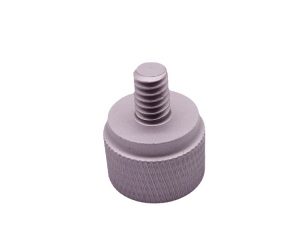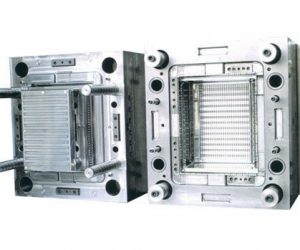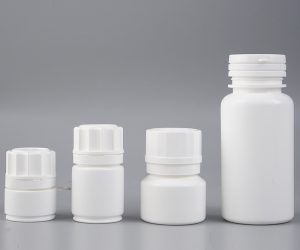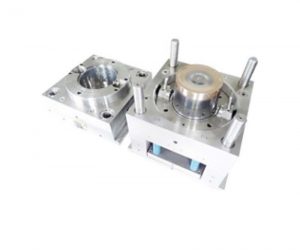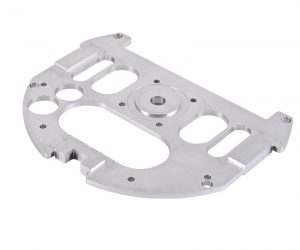The presented issues within the injection molding process manifest as a complex interplay of mechanical, thermal, and material-related factors, demanding a far more nuanced approach than a simple checklist. Let's dissect these challenges with the rigor they deserve:
I. Mold Deformation ("Bending Size"): The observed bending isn't merely "improper cooling"; it's a symptom. We must consider the mold's material properties (yield strength, thermal expansion coefficient), the clamping force's adequacy against the injection pressure, and the potential for resonant frequencies excited by the rapid pressure changes during injection. A finite element analysis (FEA) is warranted to model stress distribution and identify critical areas of deformation. Blindly "aligning and supporting" the mold is insufficient; precise adjustments based on FEA results are mandatory. Furthermore, the cooling system's efficacy must be assessed beyond simple "functioning correctly." We need data: temperature profiles across the mold cavity, flow rates, and pressure drops within the cooling channels.
II. Ejection Failure ("No Unloading"): Attributing this solely to "mechanical issues" is a gross oversimplification. The problem could stem from insufficient ejection force (requiring recalculation of ejection pin pressures and potentially redesigning the ejection system), plastic sticking due to inadequate mold release agents or surface finish (demanding microscopic analysis of the mold surface and material interactions), or even a subtle warping of the mold cavity causing part entrapment. A systematic investigation, including surface roughness measurements, material analysis (to assess the polymer's melt flow index and its interaction with the mold material), and detailed kinematic analysis of the ejection mechanism, is crucial.
III. Material Flow Inconsistency ("Uneven Feeding"): "Inadequate material flow" is vague. We must investigate the melt's rheological properties under the specific processing conditions, the runner and gate geometries (using computational fluid dynamics – CFD – to model flow patterns), and the presence of any air entrapment (requiring a thorough analysis of mold venting strategies). A simple check of the gate design is insufficient; a comprehensive understanding of the melt's behavior throughout the entire flow path is essential.
IV. Riveting Deficiencies ("Poor Riveting"): This isn't simply "poor mold design." The problem likely involves a complex interaction between the rivet's geometry, the material's mechanical properties (tensile strength, ductility), the cooling rate, and the residual stresses induced during molding. A detailed analysis of the stress concentration around the rivet, considering both the molding process and the subsequent riveting operation, is necessary. Material selection must go beyond simple suitability; it demands precise knowledge of the material's response under stress and strain, including its creep behavior and fatigue resistance.
V. Holistic Approach: Addressing these issues requires a multidisciplinary approach. Experienced mold engineers, process technicians, and material scientists must collaborate, employing advanced analytical techniques (FEA, CFD, microscopic analysis) to diagnose the root causes. Regular maintenance is not merely "key"; it's a critical component of a robust, data-driven quality control system, incorporating statistical process control (SPC) to monitor process parameters and identify deviations from optimal operating conditions. The goal is not merely to solve immediate problems but to establish a predictive and preventative maintenance strategy. This involves continuous monitoring, data analysis, and proactive adjustments to optimize the entire injection molding process.
The following analysis dissects the multifaceted challenges encountered in a bending and riveting process, moving beyond superficial descriptions to delve into the root causes and propose sophisticated solutions. The observed defects—inconsistent bending dimensions, incomplete unloading, uneven feeding, and flawed riveting—are interconnected and demand a holistic approach to remediation.
I. Bending Size Aberrations:
The inconsistencies in bending dimensions arise from a confluence of factors, demanding a systematic investigation across the entire process chain. Simple spring replacement (b) or material substitution (d) are insufficient; they address symptoms, not the underlying disease.
- Geometric Imperfections: Mold misalignment (a), inadequate spring elasticity (b), material non-conformances (c), and variations in material thickness (d) all contribute to angular errors and dimensional deviations. These require precise mold adjustment, material specification adherence, and potentially, redesign of the bending mechanism to accommodate material tolerances. The absence of a forming radius (g) points to a fundamental design flaw demanding immediate rectification. Bilateral bending discrepancies (h) suggest asymmetry in the bending force application, necessitating a reassessment of the clamping mechanism and force distribution.
- Kinematic Irregularities: Improper positioning (e) represents a fundamental error in the process setup. Addressing this requires meticulous calibration and potentially, the implementation of advanced positioning systems. Similarly, design or manufacturing defects (f) necessitate corrective actions ranging from precise welding and grinding to complete component replacement. Unilateral bending and drawing (i) highlight the need for enhanced spring force and refined positioning to ensure uniform force application. Unreasonable clearances (j) and insufficient folding knife height (k) necessitate a redesign of the tooling to optimize the bending geometry and force transmission. Excessive bending speed (l) indicates a need for process parameter optimization. Structural flaws (m) demand a complete redesign of the bending mechanism, potentially involving Finite Element Analysis (FEA) to optimize the design. Insufficient hardness of the forming male (n) necessitates a review of the heat treatment process and material selection.
II. Unloading Failures:
The persistent unloading problems stem from a combination of mechanical constraints and design inadequacies. Simple adjustments (a, b) are often insufficient.
- Mechanical Blockages: Improper positioning (a), insufficient clearance (b), and binding of the inner guide pillar (c) represent straightforward mechanical issues that require precise adjustments, repair, or component replacement. A strained or damaged punch (d) demands immediate replacement. Suboptimal ejector pin placement (e) necessitates a redesign of the ejection system, potentially employing FEA for optimal placement and force distribution. Insufficient ejection or stripping force (f) requires strengthening of the ejection mechanisms. Poor fit between the punch and splint (g) or the formed slider and its guide groove (h) necessitates precision machining to ensure smooth movement. Post-stamping deformation (i) suggests inadequate heat treatment of the stamped parts, requiring a review of the heat treatment parameters and potentially, material selection. Insufficient ejector pin length or an excessively long punch (j) requires precise dimensional adjustments or component replacement. Punch breakage (k) demands immediate replacement and a thorough investigation into the root cause of the failure. Magnetization issues (l) require demagnetization of the workpiece or adjustment of the magnetic field in the template.
III. Feeding Irregularities:
Uneven feeding is a critical bottleneck, directly impacting the quality of the final product.
- Process Alignment: Mold misalignment (a) necessitates precise adjustment or complete mold refabrication. Uneven material (b) demands rigorous material quality control and potentially, the implementation of advanced material leveling systems. Feeding problems stemming from unloading issues (c) require addressing the unloading problems first, as outlined above. Excessive clamping force (d) necessitates adjustment of the clamping mechanism. Guide pin friction (e) requires lubrication or adjustment. Interference from the punch (f) demands replacement with a correctly sized and properly secured punch. Ejector pin interference (g) necessitates adjustment of the ejector pin length. Improper floating block placement (h) requires precise adjustment of the floating block position.
IV. Riveting Deficiencies:
Poor riveting indicates a lack of precision in the assembly process.
- Dimensional and Alignment Issues: Incorrect die closing height (a) necessitates precise adjustment. Workpiece misalignment (b) requires improved positioning accuracy. Chamfer deficiencies (c) necessitate a redesign of the riveting process to incorporate chamfering. Insufficient punch length (d) necessitates replacement with a correctly sized punch. Improper riveting punch selection (e) requires careful selection of a punch appropriate for the material and riveting process.
This detailed analysis provides a framework for a comprehensive diagnosis and remediation of the identified problems. A purely reactive approach, addressing individual issues in isolation, is insufficient. A proactive strategy, incorporating preventative measures and rigorous quality control at every stage, is crucial for achieving consistent and high-quality results.

